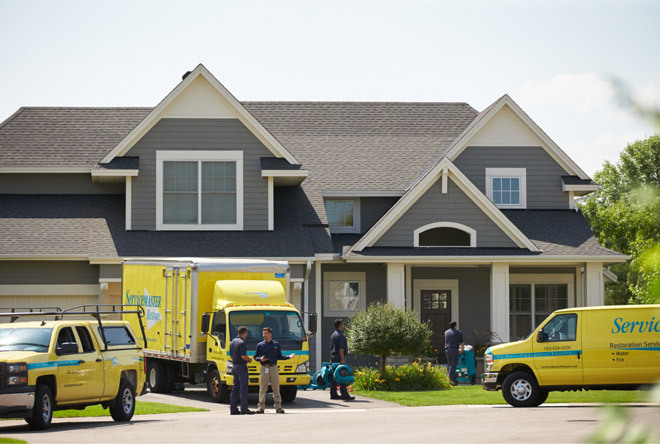Mold Removal And Remediation Services in St. Paul, MN
What Is Mold in Your House?
Mold is a microscopic life form that is found in all parts of the world. It is part of the natural decay process of all organic materials. There are many different species of mold.
Although mold is diverse, common characteristics can be found:
- Mold requires a natural food source like cellulose, which is found in drywall, wood & other home materials.
- Mold must have oxygen.
- Mold also requires moisture. To avoid mold, buildings must stay dry on the inside.
- Mold spreads by microscopic seeds called “spores.”
Give us a call at (612) 712-7464 or contact us online for mold remediation in St. Paul today!
The Dangers of Household Mold
- The colored, fuzzy growth on the surface of a wall, floor, ceiling, or other indoor surface is a problem.
- Active mold colonies usually emit a distinct “musty” odor.
- Mold’s main function is to decay, digest, and recycle dead organic matter, which means it will damage the surfaces it grows on.
- Exposure to mold can cause mild to severe allergic reactions.
Why Mold Removal Services Are Essential
What may begin as a musty odor or a small spot on the wall can quickly turn into a major issue. Mold doesn’t just affect surface appearance—it compromises structural integrity and indoor air quality.
Potential consequences of unchecked mold include:
- Structural damage to walls, insulation, ceilings, and HVAC systems
- Health concerns like coughing, sneezing, headaches, fatigue, and worsened asthma
- Higher risks for individuals with respiratory conditions or weakened immune systems
Professional mold removal ensures that both visible colonies and hidden spores are completely addressed—reducing the likelihood of regrowth and protecting your property long term.
What Is a Reasonable and Safe Response?
If the drying of wet building materials is commenced within 24 hours, the chances of preventing mold growth can be lowered. If building materials remain wet and untreated, it is predictable that mold will grow. Therefore, addressing and eliminating moisture problems is the critical first step.
Once mold is present, drying is not enough. Mold must be either removed or decontaminated. This process is called mold remediation, which means “to remedy” or “to cure.” The extent of the mold problem and the resulting damage will determine the appropriate course(s) of action to pursue.
The U.S. Environmental Protection Agency (EPA) has published a helpful guidebook for homeowners about the cleanup and prevention of mold problems in homes. This booklet can be found at www.epa.gov/iaq/molds/moldguide.html.
Professional Mold Removal Services in the Twin Cities
With the increasing attention in the mass media, mold contamination—especially black mold—has become an overwhelming problem for homeowners, property managers, insurance providers, and restoration companies in need of mold removal.
The mold remediation process becomes urgent because, in a moist, indoor environment, mold growth can begin in just 48 hours. The moisture can be a result of a flood, a slow leak, a broken pipe, or just high humidity. The growing concerns of allergies and poor air quality are identified with mold contamination.
Despite the rapidly growing body of knowledge about mold, it remains the subject of much confusion. The following is a brief explanation of mold and the complications mold can create within a home, office, or indoor setting.
Choosing professional mold remediation services includes not only removal but comprehensive prevention planning. By understanding mold's behavior and characteristics, professionals from Northwest ServiceMaster can develop effective strategies tailored to specific building needs. This ensures long-lasting protection against mold recurrence and promotes healthier indoor living spaces.
Why Choose Our Benton County Mold Removal Company?
At Northwest ServiceMaster, we bring a comprehensive and certified approach to mold removal in St. Paul and surrounding areas.
- Thorough Inspections: We use advanced moisture detection equipment and infrared technology to locate hidden mold colonies and their sources.
- Certified Mold Remediation Technicians: Our specialists are trained in industry-recognized protocols, ensuring safety and compliance during every step of the process.
- State-of-the-Art Equipment: We use HEPA-filtered vacuums, air scrubbers, and professional-grade antimicrobial agents to eliminate mold spores and prevent future regrowth.
- Complete Remediation Services: From identifying moisture sources to treating affected areas and preventing recurrence, we offer full-scale mold solutions.
Dial (612) 712-7464 or contact us online to schedule your mold inspection in St. Paul, MN today!


